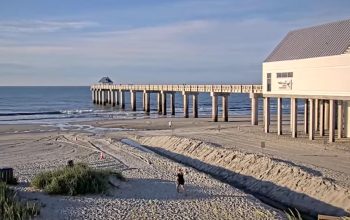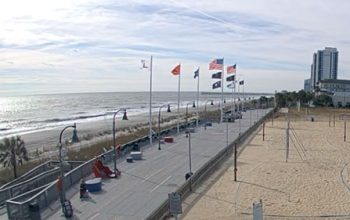The Table Rock State Park Fire: A Community in Crisis
Fire Ignites in Scenic Pickens County
The serenity of Table Rock State Park was shattered when a wildfire erupted late last week. Located in Pickens County, South Carolina, this beloved natural area quickly became the site of an environmental emergency. According to authorities, four teenage hikers were responsible for igniting the fire. Their careless actions, combined with dry conditions, turned a small spark into a fast-spreading wildfire.
Fire Size and Spread
As of the latest updates, the Table Rock Fire has scorched approximately 1,156 acres. Simultaneously, the nearby Persimmon Ridge Fire in northern Greenville County grew to 314 acres. Firefighters have worked around the clock, battling both blazes. Unfortunately, despite their efforts, neither fire is currently contained. There is no timeline for when full containment might be achieved.
Weather Conditions Fuel the Flames
One of the main challenges has been the weather. Low humidity, high winds, and unseasonably warm temperatures have created perfect conditions for fire growth. On Monday, humidity levels sat at 43%, but by Tuesday, they dropped to a dry 23%. The National Weather Service issued a Red Flag Warning across the Upstate region, signaling extreme fire danger.
Areas affected by the warning include Anderson, the Greenville Mountains, Greater Oconee, Greater Pickens, and both Northern and Southern Spartanburg. The warning will remain in effect until conditions improve.
Poor Air Quality Impacts the Upstate
With the fires raging, smoke has blanketed the Upstate. According to AccuWeather, air quality has dropped to dangerous levels, especially for sensitive groups like children, the elderly, and those with respiratory issues. Residents are being urged to stay indoors as much as possible and limit physical activity outside.
This heavy smoke is not just a nuisance—it’s a public health concern. Schools, nursing homes, and hospitals are keeping a close eye on air quality readings to protect those at highest risk.
Response Efforts on the Ground and in the Air
Fire crews have shifted their focus to key areas around the perimeter of the blaze. Their primary goal is to stop the fire’s forward movement by building control lines. Thanks to some light rain and higher humidity on Monday, crews were able to make significant progress. This small window of relief allowed them to strengthen firebreaks and explore backup containment zones.
Aerial support is also playing a crucial role. Helicopters and planes have been dropping water and fire retardant to slow the flames in hard-to-reach places. These aerial drops support the work happening on the ground, where firefighters face rough terrain and fast-changing fire behavior.
Madeline Stewart, public information officer with the South Carolina Forestry Commission, expressed cautious optimism. She noted that improved weather conditions could help limit the fire’s spread in the coming days. Still, the situation remains unpredictable.
Evacuation Orders and Safety Measures
In response to the growing threat, the South Carolina Forestry Commission issued voluntary evacuation orders for residents living just east of the park. Approximately 100 homes are currently under alert. Residents are encouraged to pack essentials and be ready to leave if the fire worsens.
No mandatory evacuations have been issued at this time. However, authorities continue to monitor the fire’s path closely. They’re ready to take swift action if the fire threatens more populated areas.
Residents are urged to stay informed through official updates from local news outlets and the Forestry Commission’s social media pages. Emergency alerts and press releases will provide the latest developments, including road closures and changes in evacuation status.
Investigation Underway
Authorities have confirmed that the fire was started by human activity. Four teenagers, whose identities have not been released, are believed to have sparked the blaze out of negligence. An investigation is underway to determine if criminal charges will be filed.
Law enforcement is working with fire officials to understand exactly how the fire started and spread so quickly. In the meantime, the state’s burn ban remains in effect across South Carolina. This ban prohibits all outdoor burning until further notice.
Protecting the Community and the Land
This wildfire serves as a stark reminder of how quickly nature can turn from peaceful to perilous. It also highlights the importance of responsible behavior in natural spaces. A single mistake can have massive consequences, especially during dry and windy conditions.
Efforts are ongoing to protect homes, wildlife, and the cherished landscape of Table Rock State Park. Firefighters continue to work tirelessly, risking their lives to stop the blaze. The community has come together, offering shelter, supplies, and support to those affected.
As the situation evolves, public safety remains the top priority. Everyone is urged to remain alert, follow guidance from officials, and do their part to prevent further fire outbreaks.
Discovering the Natural Beauty of Table Rock State Park
Nestled at the base of the Blue Ridge Mountains, Table Rock State Park spans over 3,000 acres of pure South Carolina charm. Located in northern Pickens County, this scenic park offers a peaceful escape into nature. With sweeping views, crystal-clear lakes, and wooded trails, it’s a favorite spot for hikers, campers, and families alike.
What Makes the Park Special
One of the park’s standout features is Pinnacle Mountain. It’s the highest peak located entirely within South Carolina. This makes it a must-see for hikers and outdoor lovers. But the mountain is only part of what makes this place shine.
At the heart of the park stands a historic lodge. Built in the 1930s by the Civilian Conservation Corps (CCC), it’s a symbol of the park’s rich past. The lodge has a full kitchen and can seat up to 72 people in its dining hall. It’s perfect for group gatherings, weddings, or special events. The stone and timber design blends beautifully with the natural surroundings.
Lakes and Family Fun
Table Rock State Park also features two serene lakes. Both allow seasonal swimming, boating, and fishing. Canoeing across the calm waters is a peaceful way to enjoy the views. The lakes also attract many birds and wildlife, making them great spots for nature watching.
Picnic shelters are scattered throughout the park. Families can enjoy lunch under tall pines while kids play nearby. The playground gives children a chance to burn off energy while adults relax. In addition, a well-run nature center offers educational programs. These are especially popular with kids and school groups.
Hiking Trails for All Levels
Hiking is one of the most popular activities in the park. Trails range from easy nature walks to tough mountain climbs.
For a gentle hike, the Carrick Creek Nature Trail is a great choice. It loops for 1.9 miles through shaded forest and follows two lively creeks. Along the way, hikers see small waterfalls, smooth rock outcrops, and colorful wildflowers in spring and summer. It’s a peaceful walk, perfect for beginners or families.
For more experienced hikers, the Table Rock Summit Trail presents a bigger challenge. This 3.5-mile trek rises 2,000 feet above the trailhead. The path is steep and rocky at times, but the reward is well worth the effort. At about 2.5 miles in, the trail splits. One path leads to Pinnacle Mountain. The other continues to the Table Rock summit. From the top, visitors enjoy a breathtaking view of Table Rock Reservoir and the distant peaks of Caesars Head.
Gateway to the Foothills Trail
Even more, Table Rock State Park serves as the eastern starting point of the 80-mile Foothills Trail. This long-distance trail stretches across the Blue Ridge Escarpment. It’s a favorite among backpackers and serious hikers looking for a multi-day adventure. The trail showcases the region’s best scenery, from waterfalls and mountain ridges to lush forests and deep valleys.
More Than Just Scenery
Table Rock State Park combines natural beauty with rich history and recreational fun. Whether you want to hike to a mountain peak, paddle a quiet lake, or enjoy a picnic with loved ones, this park has it all. Plus, the CCC’s legacy lives on through the park’s buildings and trails. They offer a glimpse into the past while supporting today’s visitors.
With every step, the park invites you to slow down, breathe in fresh mountain air, and connect with the great outdoors. Whether you visit for a day or stay for a weekend, Table Rock State Park promises lasting memories.
The History of Pickens, South Carolina
Early Inhabitants and Cherokee Territory
Long before modern development, the area now known as Pickens, South Carolina, was home to the Cherokee people. These Native Americans thrived in the region’s valleys and hills, relying on rivers, forests, and fertile land for food, shelter, and trade. They lived in villages, farmed corn and beans, and hunted deer and other game. The land held deep spiritual and cultural meaning for the Cherokee.
The Cherokee controlled vast territories across what is now the southeastern United States. The area around Pickens was part of their homeland for centuries. However, the arrival of European settlers brought immense change.
Impact of the American Revolutionary War
During the American Revolutionary War, the Cherokee aligned with Great Britain. They hoped that by siding with the British, they could slow the encroachment of settlers onto their land. However, when the British lost the war, the Cherokee also lost their political leverage.
As a result, the newly formed United States forced the Cherokee to surrender large parts of their territory. This included the land that would later become Pickens County. The surrender marked the beginning of a new era in the region’s history.
Formation of Washington District
In 1791, the South Carolina legislature created the Washington District. This area included what are now Greenville, Anderson, Oconee, and Pickens Counties. It was one of the earliest organized regions in the state’s upcountry. Settlers moved into the area, drawn by its fertile soil, plentiful water, and rich forests.
Just a few years later, in 1798, the Washington District was split into Greenville and Pendleton Districts. These new divisions helped the growing population manage local government, courts, and land records more efficiently.
Development of Pickens District
As settlement continued, Pendleton District was eventually divided once more. In 1828, the state created Anderson and Pickens Districts from Pendleton. The town of Pickens Court House soon rose along the Keowee River. It became the center of government and activity for the new Pickens District.
A courthouse and several other buildings were constructed. This small town grew steadily, serving as a local hub for farmers, merchants, and traveling judges. It was here that the Hagood-Mauldin House was built around 1856. This historic home still stands today and offers a glimpse into life in 19th-century Pickens.
Final Division and Relocation
In 1868, the Pickens District was divided one final time. The state formed Oconee and Pickens Counties from the old district. Along with the split, the county seat moved from its location on the Keowee River to a new site. This new town was officially named Pickens, and it remains the county seat to this day.
This move was significant. It allowed the town of Pickens to develop with a fresh start and modern layout. A new courthouse and public buildings were constructed. Streets were laid out, and the town grew quickly.
Arrival of the Pickens Railway
In 1898, the Pickens Railway was established as a shortline railroad connecting Easley and Pickens. The railway played a major role in the town’s economic development. It made it easier to move goods, crops, and people between towns. Local farmers and manufacturers used the railway to ship products, boosting commerce in the region.
Though short, the railway helped Pickens stay connected to the broader industrial growth of South Carolina in the early 20th century.
Industrial Growth and Environmental Impact
By the mid-20th century, industry had taken a stronger hold in the area. In 1955, Sangamo-Weston Inc. opened a capacitor manufacturing plant just outside of Pickens. The plant operated for over three decades. However, its legacy is marked by serious environmental issues.
During its operation, Sangamo-Weston discharged large amounts of polychlorinated biphenyls (PCBs) into the environment. These chemicals entered a tributary of the Twelve Mile River, which eventually flows into Lake Hartwell. PCBs were used in electrical equipment but are now banned due to their toxicity.
In addition to dumping waste in the water, Sangamo disposed of contaminated materials at six sites near Pickens. At two of these sites, waste was burned, creating dangerous dioxins. These chemicals posed a threat to wildlife, water quality, and public health.
Eventually, the contamination caught national attention. Investigators identified the “Breazeale site,” located southwest of Pickens, as a key pollution source. Schlumberger, which took over the company, paid $11.8 million to federal and state agencies to address the environmental damage.
A Town Rooted in History
Despite these challenges, Pickens has preserved much of its rich heritage. The area’s history is tied deeply to Native American culture, early American settlement, and South Carolina’s legal and industrial development.
Today, visitors can explore landmarks like the Hagood-Mauldin House and enjoy the beauty of nearby natural attractions. Pickens continues to grow while honoring the past that shaped it. The town stands as a reminder of the many layers of history that make up this unique corner of South Carolina.


